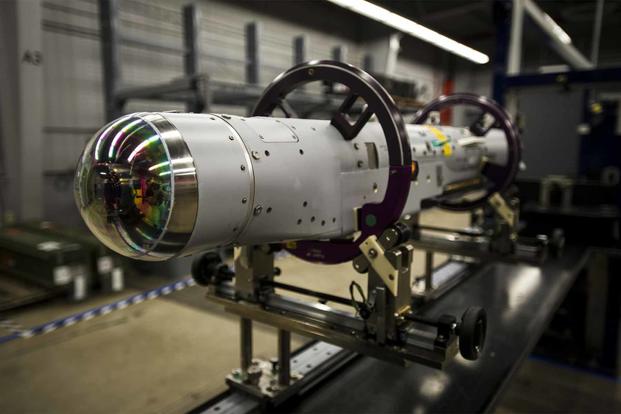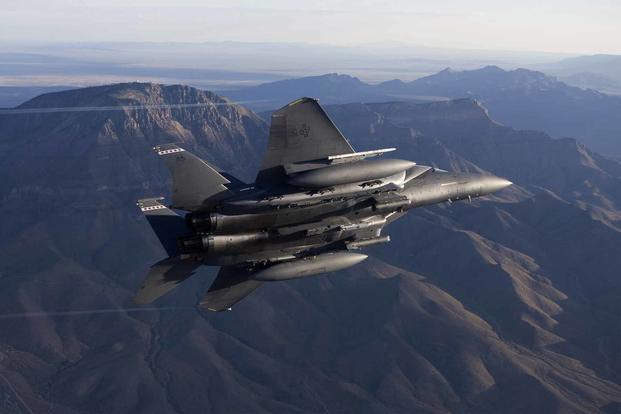A new precision-guided bomb that can go after moving targets in bad weather has been approved for operational use on the F-15E Strike Eagle, according to the U.S. Air Force.
Following nearly 140 flight and developmental tests conducted by units at Eglin Air Force Base, Florida, Air Combat Command recently signed off on the Raytheon-made bomb -- known as Stormbreaker -- for the legacy fighter, the service said in a release Tuesday. The bomb is also referred to as Small Diameter Bomb II, or SDB II.
Read Next: The Marine Corps Just Created a New MOS for MQ-9 Reaper Officers
"SDB II's ability to attack moving targets, at range in adverse weather, delivers a significant advantage to our warfighter's arsenal," Brig. Gen. Heath Collins, the Air Force Weapons Program Executive Officer, said in the release.
The Stormbreaker is also expected to fly on the Navy F/A-18 Super Hornet and F-35 Joint Strike Fighter. The Air Force, which classifies the bomb as the GBU-53, is the lead service on the program.

Stormbreaker, a 250-pound-class attack weapon, uses a millimeter wave radar to see through any kind of weather, according to Raytheon.
A fused-imaging infrared seeker on the front of the bomb helps to classify targets. While it uses a more common GPS-coordinate target system, the bomb may also carry a laser to more precisely outline a target, officials told Military.com during the 2018 Farnborough Air Show.
The weapon first entered operational testing in 2018. But in July 2019, production was stalled for roughly a year's time following a technical issue that required a redesign, Defense News reported in July. The setback, which affected the clips that held the weapon's fins in place, forced Raytheon to retrofit hundreds of bombs already delivered to the Navy and Air Force, the outlet said.
Despite the delay, its fielding on the F-15E marks the "culmination of years of incredible work conducted by our joint military and industry teams," Col. Jason Rusco, SDB II program manager and Miniature Munitions Division senior materiel leader, said in the release. "This capability is unmatched and is a game-changer for national defense."
Because of its condensed size compared to other munitions, fighters can carry a larger payload per mission and use "fewer aircraft for the same number of targets compared to larger weapons that require multiple aircraft," the release said.
For example, an F-35 can carry 24 total Stormbreaker bombs: eight internally and 16 externally. The Stormbreaker can also fly over 40 miles to strike its targets, which reduces the pilot's need to loiter around in a potentially hostile environment, the service said.
The next milestones for the bomb include integration on the F-35 stealth fighter and fielding for the Super Hornet. Air Force officials said both are expected later this year.
-- Oriana Pawlyk can be reached at oriana.pawlyk@military.com. Follow her on Twitter at @Oriana0214.
Related: Air Force Tests New Bomb That Could Replace Controversial Cluster Munitions













